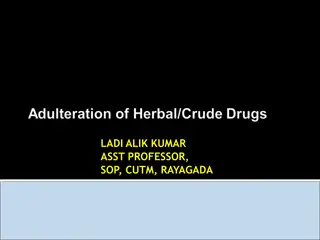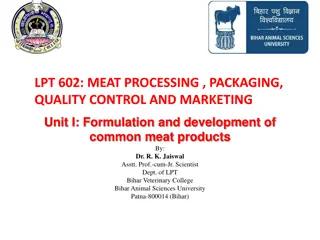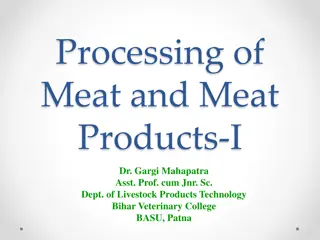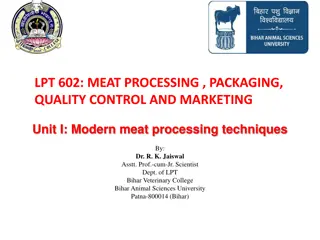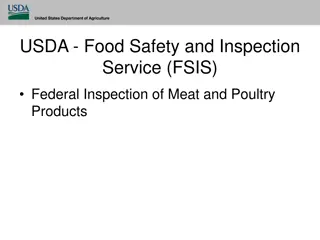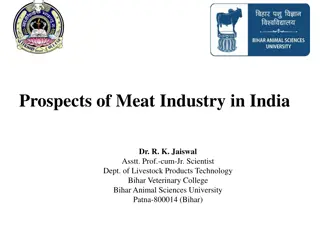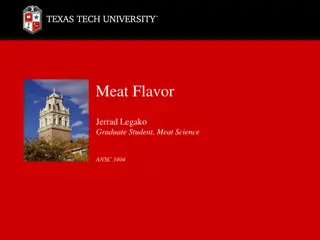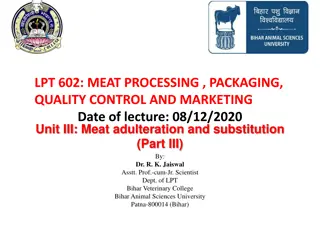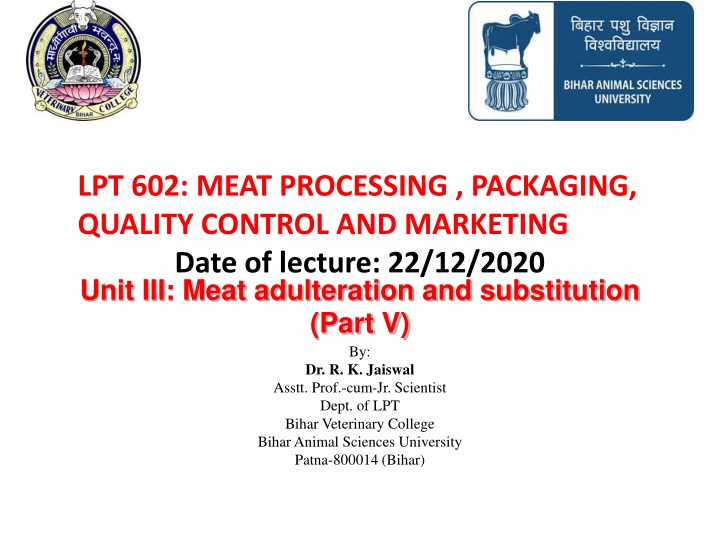
Meat Adulteration Detection Techniques and Species Identification Methods
Explore advanced techniques such as agar gel immuno diffusion test and ELISA for detecting meat adulteration and identifying meat species. Learn about immunological methods and recent developments in meat species identification using monoclonal antibodies, DNA probes, and PCR.
Download Presentation

Please find below an Image/Link to download the presentation.
The content on the website is provided AS IS for your information and personal use only. It may not be sold, licensed, or shared on other websites without obtaining consent from the author. If you encounter any issues during the download, it is possible that the publisher has removed the file from their server.
You are allowed to download the files provided on this website for personal or commercial use, subject to the condition that they are used lawfully. All files are the property of their respective owners.
The content on the website is provided AS IS for your information and personal use only. It may not be sold, licensed, or shared on other websites without obtaining consent from the author.
E N D
Presentation Transcript
LPT 602: MEAT PROCESSING , PACKAGING, QUALITY CONTROL AND MARKETING Date of lecture: 22/12/2020 Unit III: Meat adulteration and substitution (Part V) By: Dr. R. K. Jaiswal Asstt. Prof.-cum-Jr. Scientist Dept. of LPT Bihar Veterinary College Bihar Animal Sciences University Patna-800014 (Bihar)
IMMUNOLOGICAL METHODS Tube precipitin test Haemagglutination test (HAT) Complement fixation test (CFT) Agar gel immuno diffusion test (AGID) Dry disc immuno diffusion test Enzyme linked immuno sorbent assay (ELISA)
Agar Gel Immuno Diffusion Test (AGID) Based on a simple double diffusion method (Ouchterlony, 1948). Species specific antiserum (antibody) and unidentified meat extract (antigen) are allowed to diffuse towards one another in an agar gel slab. If the antigen and antibody are homologous a precipitin band is formed along the line where the two meet.
Enzyme Linked Immuno Sorbent Assay (ELISA) The technique involves the application of species specific antibodies to the proteins (antigen) coated on the plastic surface of micro-titre plate. The recognition of antigen results in the formation of antigen- antibody complex, which are detected by either enzyme linked immunoglobulin or protein A (antibody detector) producing visible colour reaction with added substrate. The colour intensity is measured objectively at a specific wave length in a micro ELISA reader as absorbance value.
Recent techniques in meat species identification Production of monoclonal antibodies and application of ELISA. Use of DNA probes and application of DNA hybridization technique. Use of Polymerase Chain Reaction (PCR) in species identification.




